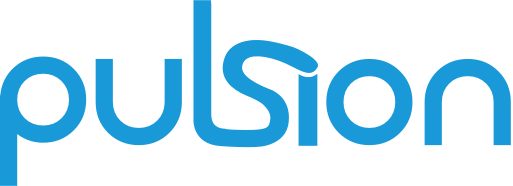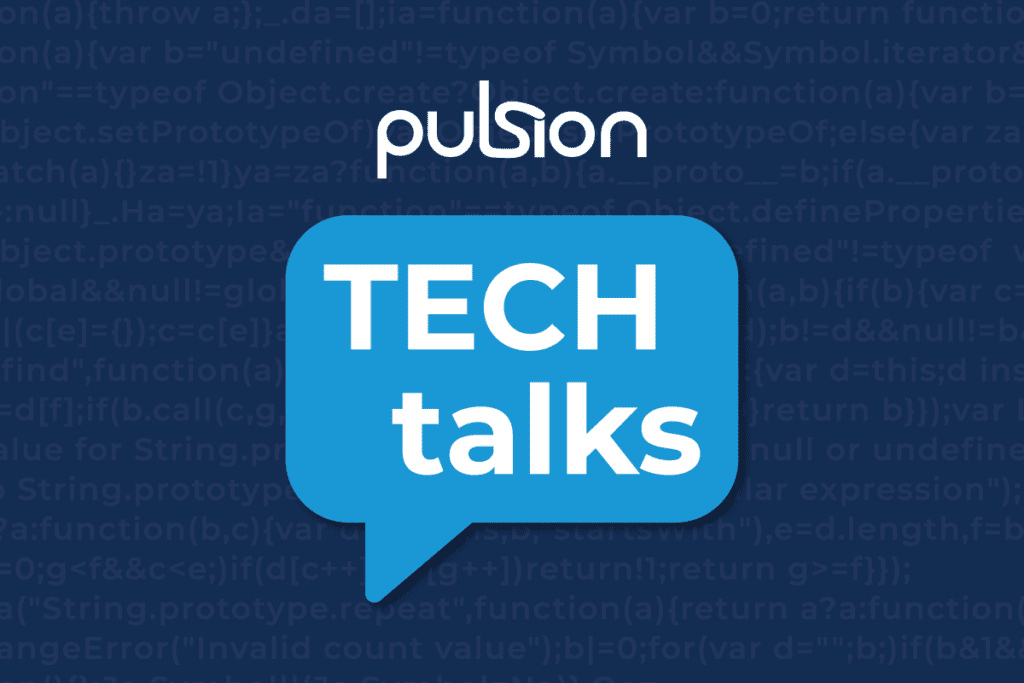As a new year approaches emerging technology in software development is getting more exciting than ever as it merges with artificial intelligence. AI trends in software development seem to be set to enable technology that will change the world forever.
The latest software development statistics have shown us that software development relies on programming languages like JavaScript and C++. As of 2022, JavaScript stands out as the most widely used programming language, with approximately 65% of software developers utilising it.
Great Read:
Industry leaders have realised that the answer lies in a digital transformation of their everyday service, one they can not actualise without investing in top software development trends and their software development teams. By following best practices and trends in software engineering they empower themselves for what comes next.
The new technology in business seems to be moving into AI investment. The estimated value of AI across industries ranges from USD 9-15 trillion (McKinsey), and 47% of digitally mature businesses have a clear AI strategy (Adobe). This is evident that the future of technology is most definitely aligned with AI and its integration. Here at Pulsion, we are artificial intelligence and machine learning consultants with around 30 years of experience in custom software development.
It quickly resembles a fruitless endeavour when you realise that the UK is experiencing inflation, considered the highest among other big economies in 2023. While the signs are there that it would slow down, it would take some time before it hits relative normality. Time is the very thing most businesses do not have as they strive to meet their bottom lines and provide uptick returns on investment while navigating tighter budgets. As a result, these emerging technologies in software trends provide more than a cosmetic solution but a lifeline for businesses and large enterprises looking to remain competitive and achieve cost efficiency while meeting their business needs.
The following are some of such software solutions businesses across various industries need to keep their eyes on:
1. Increased Adoption of Artificial Intelligence (AI)
One subject that continues to cause debate and divide rooms is the adoption of AI. While many see it as the potential rise of machines, many more people see it as a tool or guide.
It has taken up several roles and filled in many gaps, offering unprecedented advancements from automated chatbots to Elon Musk’s self-driving cars. The use of artificial intelligence is nearly inexhaustible, from everyday use as a virtual assistant to being a software development trend employed by businesses the world over to reduce cost and complement human assistance while boosting productivity and ensuring efficiency.
AI is not just another buzzword. Its real-life uses mean it is here to stay, with about 35% of businesses already implementing Artificial Intelligence to improve their service offerings, usually to improve customer service using natural language processing, and 77% of devices worldwide using one form of AI or the other. With it forecasted to contribute about £12.5 trillion to the world economy by 2030, it is no wonder that tech giants like Google have a stake in the industry, having developed TensorFlow. This end-to-end platform allows users to build and deploy machine learning models.
AI, in tandem with machine learning, allows for automation by large corporations due to its ability to crunch and interpret complex data quickly, allowing for easier, laser-guided decision-making. The use of predictive analytics allows corporations to predict future outcomes more easily and readily and stay one step ahead of the competition to experience significant growth.
Perhaps the best thing about AI and all it promises is that it is not just one for the future; it is one for right now, with companies like Github Copilot already helping software developers provide software solutions to their employers the world over. It accelerates development in the software development industry by suggesting code completion and using natural language processing to translate text prompts into coding suggestions.
2. Implementing Cloud-based Solutions
Another trend in software development that teams are looking to take advantage of is cloud computing. Cloud computing allows teams to access the necessary infrastructure like servers and databases, among other resources, over the internet instead of traditional in-house IT infrastructure. The upside to using cloud services from providers like Google Cloud, Microsoft Azure, and Amazon Web Services include quick access from multiple devices anywhere around the world, quick deployment, and high performance with cost savings.
3. Edge Computing
Having already discussed cloud computing and the cutting-edge speed and performance it offers users, industry giants have realised that it does not have answers to all questions. Storing all the data on the cloud can cause problems in areas with low-quality bandwidth, especially in sectors where poor connectivity can cause serious loss, such as health and transportation. The solution is to use edge computing in software development instead. It moves the required data to the edge of the local network, allowing the system to work both offline and online.
4. Ensure Transparency, Efficiency, and Security with the Blockchain
Many people confuse blockchain technology with cryptocurrency. While it is true that cryptocurrency and its cryptographic technology are piggybacking on the blockchain, there are many more uses for the blockchain. Although a relatively new software trend, it is already bearing dividends across several sectors with massive impacts in gaming, health, education, finance, and administration, to name a few.
The ability to execute smart contracts using decentralised applications (dApps) by the Ethereum, Solana, Cardano, and Polkadot blockchains, among others, makes the adoption of blockchain one of the key trends more and more companies are looking to implement.
Decentralised Applications (dApps) are applications that are not controlled by a single computer or authority but instead hosted on the blockchain or peer-to-peer (p2p) network. This means entries on these applications can not be altered by any one authority, making them permanent or irreversible.
These come in handy when security and accountability are paramount, a great example being financial services. With about £1.2 billion lost to fraud only in 2022 and technology constantly changing, these crimes are becoming ever so faceless, and it is not enough to put stopgap measures in place. It becomes crucial to nip the problem entirely in the bud, and that’s why companies are looking at implementing blockchain technology. It does so by providing users with secure and stable cross-border transaction channels that are high-speed and cost-effective as they do not require third parties or intermediaries.
One other sector looking at blockchain tech as one of the latest trends to get behind is the health sector. The following are some of the ways the healthcare sector benefits from adopting blockchain software:
One problem plaguing the healthcare sector is the inability to keep patient data private due to inefficient handling of medical records. Most of the time, the problem is caused inadvertently, perhaps by a healthcare practitioner carelessly leaving files unattended, which can be breached by anyone nearby. Players in the industry are looking to blockchain as one of the secure practices that can be implemented to safeguard personal information behind private and public keys that can only be accessed with adequate permissions, significantly reducing the risk of being accessed by unauthorized parties.
Another problem in the healthcare sector that blockchain poses to resolve is inadequate supply chain management. Particularly with pharmaceutical supplies, tracking shipments from the ports where they are received to outlets, pharmacies, and clinics where they would be used is nearly impossible.
Issues like unexpected delays, shortages, and inability to forecast demand would become things of the past as blockchain provides data gathered that makes it possible to track the use, demand, and supply of these products at every juncture and permanently store them on an unalterable ledger that invested parties can access. This would reduce waste and wait time and make it possible for medication to reach people who need it in record time.
The supply chain problem is not unique to the healthcare and pharmaceutical sectors, as many industries are looking to the blockchain to identify issues, proffer solutions, and reduce costs. Walmart is one of such industries that has already jumped the gun with its partnership with IBM to create a food traceability system that now allows it to track mangoes across all its stores in the United States in under three seconds thanks to the pinpoint accuracy of the data management system provided by Hyperledger Fabric blockchain system.
It is worth noting that some aspects of the blockchain still give businesses concern. These include inadequate to no regulation by some government organizations and the issue of scalability, in part due to its heavy energy requirement. All these are drawbacks software developers are looking to resolve in the near future.
5. Freedom with Web 3.0
Web 3.0 is inevitable. It promises to usher in a new era of the internet where monopolies are broken and power returns to everyday internet users. It is not really about new features but more about doing the same things we have always done in a new way. It does not yet have a particular definition, as the technology that dictates its existence is only just finding footing in the digital space. Underpinned by blockchain tech, Web 3.0 aims to create new economies and apps that will shape this new era of the internet, marked by intellectual property protection and other security practices conferred by the blockchain.
It is one of the emerging trends in software development and one of the more important considerations by companies, particularly in the IT industry, staging to offer digital solutions to Web 2.0 and 1.0 shortcomings.
6. More Companies Will Embrace Native Development
With the demand for mobile apps growing rapidly in today’s world, app development teams vying to stay competitive have had to find ways to cut down the time spent in software development. One way they have been able to do so is through hybrid development. Hybrid app development, unlike native development, allows the app development team to create apps using web technologies encapsulated in native shells with cross-platform functionality. It typically requires software development skills that can make the most of frameworks and tools like React Native, Ionic, Xamarin, Phone Gap, and Flutter.
While there are many positives to apps deployed using hybrid development, including less development time as one code base can be used across multiple platforms for multiple devices, lower costs as it requires significantly less maintenance by the development team, and offering the same functionality as native apps, industry leaders have caught on the need to revert to the use of native apps. The inability of some hybrid apps to send push notifications takes away from the user experience, coupled with the occasional lacking visual interface of the applications is another major reason native app development would be making a comeback as one of the software development trends to anticipate.
Native app development is simply developing and deploying apps for different operating systems. Instead of one that can be packaged for Android, iOS, and other operating systems, the software developer is tasked with building apps for each from the ground up. While this is a relatively arduous software development process with potential financial implications, businesses are keen on using this model over the increased flexibility the hybrid development system offers.
The growing interest results from the following benefits native app development offers over its hybrid counterpart. The first is that since the entire application was designed for a particular operating system, the user would have flawless performance. Another reason companies are investing heavily to develop software natively is because of the continuous integration it affords the mobile developers; as the OS improves, they can make changes to catch up, ensuring the application design and function continue to look modern, staying relevant and in some cases, stay ahead of its time.
7. Internet of Things (IoT): Connecting both worlds
The Internet of Things (IoT) describes the connectivity and data exchange among a network of devices you would not typically consider internet-ready that bridge the physical and digital worlds. Thanks to IoT sensors and actuators in these everyday objects, they can share data in the network. While there are multiple use cases, the reason it has become cemented as one of the latest technologies for companies to consider is the ease with which it collects not just data but also accurate data. One of the several IoT solutions organizations are looking to enjoy is access to endless datasets that guide informed decision-making and design strategies.
8. Better User Experience with Progressive Web Apps (PWAs)
Progressive web apps are applications built using web development technologies like HTML, CSS, and Javascript that operate as a web page and mimic a mobile app on an internet-ready device. These progressive web applications (PWA) are responsive, offer the same user experience as mobile apps, and feature search engine optimisation while being largely more cost-effective than a native mobile app of the same functionality.
9. Exploring Untapped Benefits of Mixed Reality (MR) Technology
Mixed reality is not a new concept and should not be confused with Augmented reality (AR) or Virtual reality (VR). It is the least explored of the three but is becoming increasingly popular as it combines the benefits of both Augmented reality and Virtual reality. To understand what mixed reality is, how it can benefit different businesses, and why it is one of the top trends in software development, we need to understand what AR and VR are.
AR and VR themselves are not new technologies. They have been around for a while and have found extensive use in the entertainment industry. Video games, consoles, and mobile apps have found ways to integrate both technologies positively. VR allows users to immerse themselves and interact with a digital world, while AR allows them to interact and manipulate digital objects rendered in the real world.
Mixed reality combines both worlds by allowing users to experience the immersive VR world in the real world while interacting with the digital elements within. MR is the top pick among software development trends because of the immense opportunity it offers many different industries. It has been an integral part of the medical industry since the introduction of Medivis, a medical company revolutionising surgical care for patients with MR technology, allowing caregivers to view human anatomy like never before.
Other industries like manufacturing and construction are not left out with inventions like Microsoft Hololens, allowing their frontline workforce access to more information and schematics ready to be pulled out of thin air with mixed reality technology. The benefits of using mixed reality tech do not end there. It allows for interactive training of employees, simulation for stakeholders or prospective homeowners in real estate, the everyday consumer inspecting products before making a purchase in an ecommerce store, reducing maintenance times, and real-time collaboration anywhere around the world, handy for people doing remote work.
10. Businesses Adopt Low-Code and No-Code Development
One of the new trends expected to permeate several industries is low-code-no-code development. It allows people with little coding knowledge to develop reliable and relevant products for their organizations. This does not mean writing code would be obsolete; it frees up the time for most DevOps teams to tackle more serious problems.
This introduction is especially great for small businesses as it allows them to leverage features of low code development tools to meet their goals without needing to go out of budget outsourcing to a developer. This option allows industries that do not traditionally require coding to access the latest technology trends.
One example of such low code development platforms is Google App Maker. It is a drag-and-drop tool that can be used for building apps and has brought success to several industries. According to a survey conducted by Radix, 70% of new apps will use no code or low code development by 2025.
The only drawback many experts have with these low code platforms is the code quality. They are convinced it might not be to par, with the general response to these fears being it would matter little since these techs will not be doing any of the heavy lifting.
11. More Need for DevSecOps
As technology advances, so does the level, degree, and frequency of cyber threats. With newer technologies allowing for near-untraceable cyber attacks, the traditional DevOps model of developing systems before considering vulnerabilities and security is outdated. It leaves these systems open to hacks and compromises with serious consequences. The solution that many companies are looking to include in their software development processes is the DevSecOps model that ensures the best security practices are implemented at all aspects of development. This ensures shared responsibility across all the various departments involved in the software project, allowing loopholes to be detected more efficiently.




